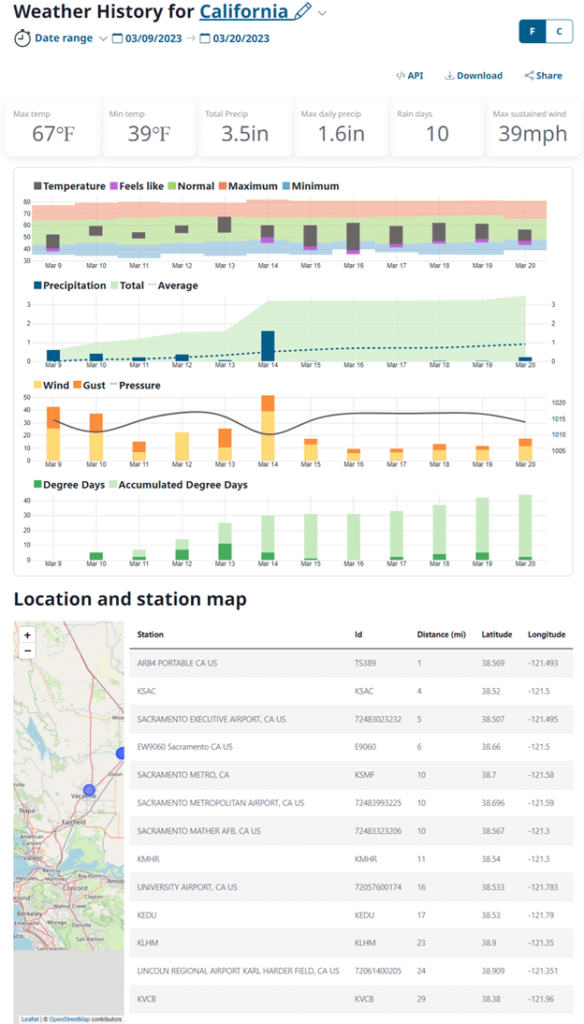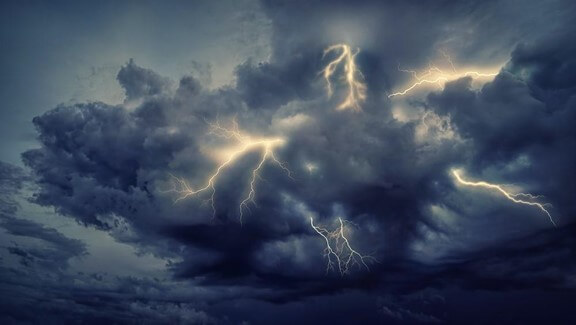On Friday, a powerful winter storm brought heavy rain over large areas of California. This increased the possibility of serious floods and prompted some cities to issue evacuation alerts.
The storm began on Thursday and was known as an atmospheric river. According to the forecasters, heavy rainfall and snow were expected in some areas of the state into the weekend.

Storms continue to wreak devastation on California with heavy snowfall and powerful winds closing schools and forcing some individuals to remain inside their houses.

On Wednesday night, Governor Gavin Newsom proclaimed a state of emergency for the 13 counties hit hardest by the storms. Amador, Kern, Los Angeles, Madera, Mariposa, Mono, Nevada, San Bernardino, San Luis Obispo, Santa Barbara, Sierra, Sonoma, and Tulare will all get disaster response and relief services.
In January, the California Emergency Services Agency and commercial weather forecasters predicted the state might suffer damages costing up to $1 billion due to weeks of storms and floods.
Snow has been falling heavily in hilly areas over the previous week. Snowfall in the San Bernardino Mountains caused road closures and trapped residents, who were forced to stay inside while emergency services attempted to clear the roads as quickly as possible.
Blizzard conditions led several ski resorts to close, while Yosemite National Park is closed indefinitely due to it receiving 15 feet of snow in some places. The Yosemite Valley floor received a record 40 inches of snow on Tuesday.
When a winter storm dropped feet of snow throughout California, Governor Gavin Newsom declared a state of emergency in 13 counties, including San Bernardino County, where some families remain locked inside their houses.
During a press conference, Fire Chief Dan Munsey of San Bernardino County stated that officials had performed about one hundred rescues as of Wednesday evening. Authorities have not yet received reports of significant injuries or deaths.
He said that they are currently attending to medical emergencies. The fires and those trapped in cars need immediate attention. Those whose homes have been damaged by falling trees or collapsed roofs are being rescued by volunteers and sent to evacuation centers, Munsey added.
Days after the first round of winter storms slammed California, PowerOutage.us reported that little over 70,000 households and businesses were still without electricity early Thursday morning. A break from the snow is likely to last until the end of the week, but another storm is predicted to hit Northern California this weekend.
Late Wednesday, Newsom announced a state of emergency for San Bernardino County and 12 others, including Los Angeles and Santa Barbara counties, stating that many state personnel had rushed to help the country.
A representative for the Office of Emergency Services reported on Thursday morning that the California National Guard had left Fresno and was on their way to the mountain regions buried in snow. They were anticipated to arrive by midday.

Officials stated at a news conference on Wednesday that it may take a week to 10 days to clear the snow from the roads in the mountain villages. According to Eric Sherwin, a representative for the fire department, residents of the mountain were still cut off from roadways on Wednesday. According to Brendon Biggs, the county’s director of public works, the county’s mountainous parts contain over 500 miles of narrow, twisting roads that need snow removal.
The National Weather Service reports that certain areas of California have experienced more than 100 inches of snow in the past week, prompting authorities to issue avalanche warnings.
The sheriff’s office in Olympic Valley posted on Facebook that an avalanche had struck a three-story flat building on Tuesday evening, submerging the bottom two stories and forcing the residents to leave. Nobody inside the building was injured.
Highway 168 was closed due to the accumulation of 10 to 12 feet of snow near China Peak. The Fresno County Office of Emergency Services reported 144 inches of snowfall at Huntington Lake in the Sierra Nevada.
Mount Baldy, south of Los Angeles, received 106 inches of snowfall on February 22. According to meteorologist Taylor Ward, only 29 of the 106 inches fell during the past two days, while the remaining 77 fell late last week and over the weekend.
The government and the officers are doing their best to recover from the damage caused by the storm. Official hope that the residents of state will soon be able to return to their normal lives.
